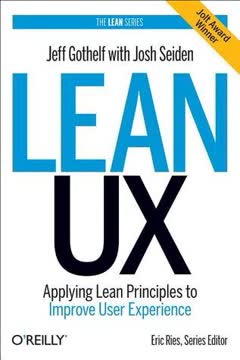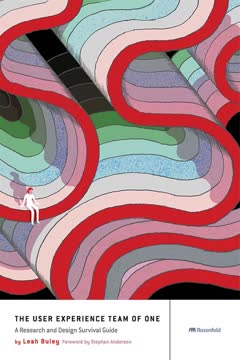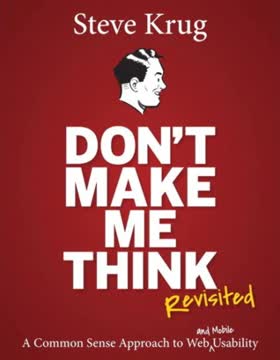重点摘要
1. 早期且频繁地验证以避免构建无人需要的产品
通过早期验证,确保在还有时间修正的情况下,使产品具有吸引力和可用性。
早期验证节省时间和金钱。 与其花费数月时间构建无人需要的产品,不如快速且廉价地验证你的想法。使用以下技术:
- 登陆页面测试以在构建前评估兴趣
- 客户访谈以了解用户问题
- 原型测试以评估可用性
- 功能预览以测试新功能的需求
通过早期获取反馈,你可以在投入大量资源之前调整或改变产品方向。这增加了构建人们真正需要并愿意付费的产品的机会。
2. 进行用户研究以了解客户问题和需求
此时你能犯的最大错误就是一开始就告诉测试对象你在做什么以及它对他有多好。没有什么比你试图向他推销你的想法更能快速地影响一个会话了。你不是来谈话的。你是来倾听的。
多听少说。 有效的用户研究需要了解客户的实际问题和需求,而不仅仅是验证自己的想法。使用以下技术:
- 情境调查:观察用户在自然环境中的行为
- 开放式访谈:询问他们的问题,而不是你的解决方案
- 可用性测试:观察用户与原型的互动
专注于发现用户的痛点和目标。避免引导性问题或推销你的产品。目标是获得关于用户行为和动机的真实见解,以指导你的产品决策。
3. 在适当的时间使用适当的研究方法以提高效率
留在建筑物内。走出建筑物并不总是需要实际走出去。事实上,有时留在建筑物内可能更有效率。
战略性地选择研究方法。 产品开发的不同阶段需要不同的研究方法。考虑以下方法:
- 远程测试以快速获取原型反馈
- 无监督测试以快速识别可用性问题
- 调查以验证定性研究中的假设
- A/B测试以衡量设计变更的影响
将研究方法与具体目标和限制相匹配。远程方法通常比面对面测试更快、更便宜地提供有价值的见解。使用定性和定量方法的混合以获得完整的视角。
4. 设计足够的内容以验证假设,而非追求完美
过早的美化是导致更多用户体验灾难的原因,比Myspace还多。对,我说了。
初期注重功能而非形式。 在早期阶段,避免陷入视觉美化的困境。相反:
- 使用快速草图探索布局选项
- 创建低保真线框图以测试核心功能
- 构建交互原型以验证用户流程
- 在核心概念得到验证之前推迟高保真模型
目标是尽快验证你的核心假设和可用性。美观的设计需要时间,并可能使你不愿根据用户反馈改变方向。将视觉优化留到后期阶段。
5. 利用设计模式和框架加速开发
大多数交互不需要任何具有开创性或惊人的东西。它们需要的是可用、简单和清晰的东西。
不要重新发明轮子。 许多常见的界面元素已经有了既定的最佳实践。利用现有的模式和框架来:
- 减少设计和开发时间
- 确保产品的一致性
- 受益于经过验证的可用性原则
像Bootstrap、Material Design或iOS人机界面指南这样的资源提供了现成的组件和模式。根据你的品牌进行定制,但不要感到有压力为标准功能创建全新的交互。
6. 创建最小可行产品(MVP)以测试核心假设
一个有限的产品可能功能不多,但它所做的事情做得很好。它清楚地告诉用户它做什么以及用户应该做什么。它解决了一个严重的问题,或者是一个严重问题的一小部分。
从小而专注开始。 一个MVP应该:
- 非常好地解决一个特定问题
- 具有明确的价值主张
- 即使范围有限也要可用
- 允许你收集有意义的用户反馈
从解决你最具风险的假设的核心功能集开始。避免添加“锦上添花”的功能。每个额外的功能都会增加复杂性和开发时间,而不一定增加价值。根据用户反馈迭代以逐步扩展功能。
7. 使用A/B测试和有意义的指标衡量设计影响
设计不是艺术。如果你认为有某种理想的设计完全脱离了它对公司底线的影响,那么你是一个艺术家,而不是设计师。设计有一个目的和目标,这些东西是可以衡量的。
数据驱动的设计决策。 使用A/B测试来:
- 衡量设计变更对关键指标的影响
- 验证或否定设计假设
- 持续改进你的产品
专注于真正表明用户满意度和业务成功的指标,例如:
- 保留率
- 转化率
- 每用户收入
- 净推荐值(NPS)
避免与实际业务结果无关的虚荣指标。记住,没有单一指标能讲述整个故事——查看多个指标的趋势。
8. 在跨职能团队中工作以更快迭代
不要将你的组织设置为用户研究部门、用户体验部门、产品部门和工程部门,而是想象一个专注于首次用户体验的团队。
打破孤岛以更快迭代。 跨职能团队:
- 改善学科之间的沟通
- 减少交接延误和误解
- 允许快速原型和测试
- 确保在决策中考虑所有观点
在每个团队中包括产品管理、设计、工程和其他相关职能的代表。这允许根据用户反馈快速调整,并确保在设计过程的早期考虑技术限制。结果是更快、更连贯的产品开发。
最后更新日期:
FAQ
What's UX for Lean Startups about?
- Focus on User Experience: The book emphasizes creating products that people will buy, use, and love by focusing on user experience (UX).
- Lean Startup Methodology: It integrates Lean Startup principles, promoting rapid experimentation and learning from customers to validate product ideas.
- Accessible to All: Laura Klein makes UX concepts accessible to entrepreneurs and product managers, regardless of their design background.
Why should I read UX for Lean Startups?
- Practical Guidance: Offers actionable advice and tools for product development, helping avoid common UX design pitfalls.
- Real-World Examples: Includes insights and examples from Klein's experience in startups, illustrating the concepts discussed.
- Improves Product Success: Helps increase the chances of creating products that resonate with users and succeed in the market.
What are the key takeaways of UX for Lean Startups?
- User-Centered Design: Validating user needs through direct engagement and research is crucial.
- Iterative Process: Promotes continuous feedback and refinement to meet user expectations.
- Lean UX Tools: Introduces tools like early validation, prototyping, and testing to streamline design and reduce waste.
What is Lean UX, according to UX for Lean Startups?
- Validation of Hypotheses: Focuses on validating product hypotheses through user feedback, treating development as experiments.
- User-Centered Approach: Ensures design decisions are informed by real user insights.
- Agile and Iterative: Aligns with Agile methodologies, promoting rapid iterations and collaboration.
How does Laura Klein suggest validating product ideas in UX for Lean Startups?
- Early Validation Techniques: Recommends methods like ethnographic studies and prototype testing to gather feedback before full-scale development.
- Focus on User Pain Points: Advises identifying and validating whether your product addresses user problems effectively.
- Iterative Feedback Loop: Encourages integrating user insights continuously into the design process.
What is the Minimum Viable Product (MVP) concept in UX for Lean Startups?
- Definition of MVP: The simplest product version to validate hypotheses with minimal effort and resources.
- Focus on Learning: Aims to learn about user preferences quickly, enabling informed iterations.
- Avoiding Waste: Prevents spending on unwanted features, aligning development with user demand.
How does UX for Lean Startups define user research?
- Understanding Users: Gathering insights about users' needs, behaviors, and pain points to inform design.
- Methods and Techniques: Covers interviews, surveys, and usability testing as research methods.
- Continuous Process: Emphasizes ongoing research throughout the product lifecycle.
What are some specific methods for user research mentioned in UX for Lean Startups?
- Ethnographic Studies: Observing users in their environment to understand behaviors and challenges.
- Landing-Page Tests: Gauging interest in a product idea with simple landing pages before development.
- Prototype Testing: Using interactive prototypes to test usability and gather feedback.
How does UX for Lean Startups suggest handling design changes?
- Iterative Design: Advocates for making changes based on user feedback and testing results.
- Avoiding Over-Design: Suggests prioritizing functionality over visual design early in the process.
- Cross-Functional Collaboration: Encourages collaboration to ensure practical and user-focused design changes.
What role do metrics play in UX for Lean Startups?
- Measuring Success: Essential for evaluating design changes and understanding user behavior.
- A/B Testing: Gathers quantitative data on design impact on user actions and business outcomes.
- User Happiness: Emphasizes tracking metrics related to retention and engagement to meet user needs.
What are some common mistakes to avoid in user research, according to UX for Lean Startups?
- Assuming User Needs: Warns against making assumptions without validating through research.
- Ignoring User Feedback: Failing to incorporate feedback can lead to unmet user expectations.
- Overcomplicating Designs: Advises simplicity and clarity in design to enhance user experience.
What are the best quotes from UX for Lean Startups and what do they mean?
- “Startups require good design...”: Highlights the need for effective design practices even with limited resources.
- “Lean UX isn’t about adding features...”: Focuses on understanding user needs and business goals over feature addition.
- “You need to solve a real problem...”: Stresses the importance of user research in identifying genuine user pain points.
评论
《精益创业的用户体验设计》获得了大多数正面评价,因其在用户研究、验证和迭代设计方面提供的实用建议而备受赞誉。读者们欣赏作者的幽默感和直截了当的写作风格。这本书推荐给企业家、产品设计师以及任何参与产品构建的人。有些人批评内容重复和写作风格过于随意。许多人认为这本书是将精益原则应用于用户体验设计的宝贵资源,尽管有经验的专业人士可能会发现新信息较少。总体而言,这本书被认为是将用户体验实践融入精益创业方法论的有用指南。
Similar Books














